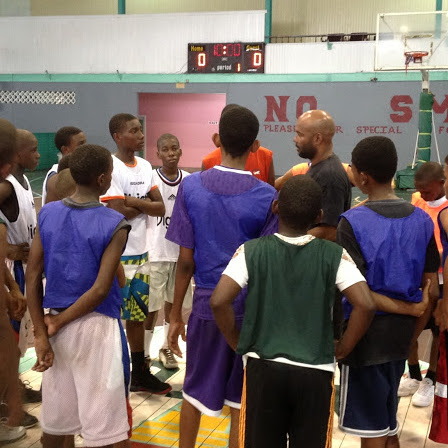Wayne Bowman
from North Rose, NY
Wayne Bowman Phones & Addresses
- North Rose, NY
Name / Title
Company / Classification
Phones & Addresses
W & T BOWMAN FAMILY LIMITED PARTNERSHIP II
W & T BOWMAN FAMILY LIMITED PARTNERSHIP I
Director, President, Vice President
HOUSE OF TIRES
Treasurer
MAT-SU MOTOR MUSHERS
Resumes

Wayne Bowman
view source
Wayne Bowman
view source
Wayne Bowman
view source
Wayne Bowman
view source
Wayne Bowman
view source
Wayne Bowman
view source
Wayne Bowman North Rose, NY
view sourceWork:
Pace Electronics
Sodus, NY
Nov 2006 to Oct 2013
Warehouse Foreman Rocco's Landscaping
Wolcott, NY
Jun 2004 to Sep 2006
Laborer
Sodus, NY
Nov 2006 to Oct 2013
Warehouse Foreman Rocco's Landscaping
Wolcott, NY
Jun 2004 to Sep 2006
Laborer
Education:
Wolcott High School
Wolcott, NY
2004
High School Diploma
Wolcott, NY
2004
High School Diploma

Wayne Bowman North Rose, NY
view sourceWork:
Pace Electronics
Sodus, NY
May 1986 to Oct 2013
Warehouse Manager
Sodus, NY
May 1986 to Oct 2013
Warehouse Manager
Isbn (Books And Publications)
-
Philosophical Perspectives On Music
view source -
Author:Wayne D. Bowman
-
ISBN #:0195112962
Us Patents
-
Thermal Dye Transfer System With Polyester Ionomer Receiver
view source -
US Patent:55344780, Jul 9, 1996
-
Filed:Jun 6, 1995
-
Appl. No.:8/469132
-
Inventors:Wayne A. Bowman - Walworth NY
Leslie Shuttleworth - Webster NY
Helmut Weber - Webster NY -
Assignee:Eastman Kodak Company - Rochester NY
-
International Classification:B41M 5035
B41M 538 -
US Classification:503227
-
Abstract:A thermal dye transfer assemblage comprising: (a) a dye-donor element comprising a support having thereon a dye layer comprising a dye dispersed in a polymeric binder, the dye being a cationic dye or a deprotonated cationic dye which is capable of being reprotonated to a cationic dye having a N--H group which is part of a conjugated system, and (b) a dye-receiving element comprising a support having thereon a polymeric dye image-receiving layer, the dye-receiving element being in a superposed relationship with the dye-donor element so that the dye layer is in contact with the dye image-receiving layer, the dye image-receiving layer comprising a polyester ionomer comprising a polyester backbone containing units of a sulfonic acid or a sulfonimide or their salts, with the proviso that when the dye is a deprotonated cationic dye which is capable of being reprotonated to a cationic dye having a N--H group which is part of a conjugated system, the dye image-receiving layer comprises a polyester ionomer comprising a polyester backbone containing units of a sulfonic acid or a sulfonimide.
-
Thermal Dye Transfer System With Low Tg Polymeric Receiver Mixture
view source -
US Patent:56271280, May 6, 1997
-
Filed:Mar 1, 1996
-
Appl. No.:8/609817
-
Inventors:Wayne A. Bowman - Walworth NY
Daniel J. Harrison - Pittsford NY
Karen M. Kosydar - Penfield NY
Teh-Ming Kung - Rochester NY
Kristine B. Lawrence - Rochester NY
William H. Simpson - Pittsford NY -
Assignee:Eastman Kodak Company - Rochester NY
-
International Classification:B41M 5035
B41M 538 -
US Classification:503227
-
Abstract:A thermal dye transfer assemblage comprising: (a) a dye-donor dement comprising a support having thereon a dye layer comprising a dye dispersed in a polymeric binder, the dye being a deprotonated cationic dye which is capable of being reprotonated to a cationic dye having a N--H group which is part of a conjugated system, and (b) a dye-receiving element comprising a support having thereon a polymeric dye image-receiving layer, the dye-receiving element being in a superposed relationship with the dye-donor element so that the dye layer is in contact with the polymeric dye image-receiving layer, the polymeric dye image-receiving layer comprising a mixture of an organic polymeric or oligomeric acid which is capable of reprotonating the deprotonated cationic dye and a polymer having a Tg of less than about 19. degree. C. and having no or only slight acidity.
-
Receiver For Dye Imbibition Printing
view source -
US Patent:56228082, Apr 22, 1997
-
Filed:Mar 12, 1996
-
Appl. No.:8/614413
-
Inventors:Wayne A. Bowman - Walworth NY
Charles P. Hagmaier - Rochester NY
Frank D. Manioci - Henrietta NY -
Assignee:Eastman Kodak Company - Rochester NY
-
International Classification:G03C 826
G03C 725
G03C 724 -
US Classification:430199
-
Abstract:Dye imbibition printing blanks are disclosed comprising a support bearing a layer comprising a cationic mordant, a hydrophilic colloid and a plasticizer polymer, wherein the plasticizer polymer is a latex polymer having a glass transition temperature below about 30. degree. C. comprising from about 2 to 20 wt % of units having a quaternary ammonium group. In a preferred embodiment, the latex polymer comprises a vinyl co-polymer addition product of from about 50 to 98 weight percent of acrylic or methacrylic ester units, 0 to 48 weight percent of vinyl benzene units and 2 to 20 weight percent of the quaternary ammonium group containing unit. This latex provides a dye imbibition printing blank substantially free of haze and brittleness.
-
Sulfonate-Containing Polymeric Binder In Dye-Donor Element For Thermal Dye Transfer Systems
view source -
US Patent:54299063, Jul 4, 1995
-
Filed:Feb 17, 1994
-
Appl. No.:8/198020
-
Inventors:Wayne A. Bowman - Walworth NY
Karen M. Kosydar - Penfield NY -
Assignee:Eastman Kodak Company - Rochester NY
-
International Classification:B41M 5035
B41M 526 -
US Classification:430200
-
Abstract:This invention relates to a dye-donor element for thermal dye transfer comprising a support having thereon a dye layer comprising an image dye dispersed in a binder, wherein the binder comprises a water-dispersible vinyl copolymer having a glass transition temperature below about 54. degree. C. and having the formula: ##STR1## wherein: R. sup. 1 and R. sup. 2 each independently represents hydrogen or methyl; D represents a substituted or unsubstituted phenyl group; or --COOR. sup. 3, where R. sup. 3 represents a substituted or unsubstituted alkyl group of 1 to about 6 carbon atoms, a substituted or unsubstituted cycloalkyl group of about 5 to about 8 carbon atoms, or an organic group containing ethylenic unsaturation; E represents --C. sub. 6 H. sub. 4 --; --CONHR. sup. 4 --; or --COOR. sup.
-
Aqueous Coating Compositions For Antistat Layers Having Print Retaining Qualities
view source -
US Patent:53859685, Jan 31, 1995
-
Filed:Jun 8, 1993
-
Appl. No.:8/073188
-
Inventors:Wayne A. Bowman - Walworth NY
Mario D. DeLaura - Rochester NY
Norman S. Edgett - Rochester NY -
Assignee:Eastman Kodak Company - Rochester NY
-
International Classification:C08J 510
C08K 334
C08L 3312 -
US Classification:524493
-
Abstract:An aqueous coating composition for applying a print retaining antistatic layer consisting essentially of an aluminum modified colloidal silica and an antistatic agent in a binder polymer, the binder polymer consisting essentially of an addition product of from about 30 to 78 mol % of an alkyl methacrylate wherein the alkyl group has from 3 to 8 carbon atoms, from about 2 to about 10 mol % of an alkali metal salt of an ethylenically unsaturated sulfonic acid and from 20 to about 65 mol % of a vinyl benzene, the polymer having a glass transition point of from 30. degree. to 65. degree. C.
-
Dye Imbibition Printing Blanks With Antistatic Layer
view source -
US Patent:57099715, Jan 20, 1998
-
Filed:Mar 12, 1996
-
Appl. No.:8/614423
-
Inventors:Wayne Arthur Bowman - Walworth NY
Charles Peter Hagmaier - Rochester NY
Frank Dean Manioci - Henrietta NY -
Assignee:Eastman Kodak Company - Rochester NY
-
International Classification:G03C 185
G03C 852
B41N 100 -
US Classification:430 14
-
Abstract:Dye imbibition printing blanks are disclosed comprising a support bearing on one side thereof a dye-receiving layer comprising a cationic mordant, and further comprising an antistatic layer substantially free of cationic polymers. The antistatic layer is preferably provided on the opposite side of the support relative to the dye-receiving layer. Such antistatic layer provides improved antistatic properties which enable high manufacturing and processing speeds without adversely affecting printed image qualities.
-
Thickener For Delivery Of Photographic Emulsions
view source -
US Patent:59725915, Oct 26, 1999
-
Filed:Dec 30, 1993
-
Appl. No.:8/179830
-
Inventors:Marianne Yarmey - Amhurst MA
Wayne Arthur Bowman - Walworth NY
Stephen Joseph Kozak - Webster NY
Gary Francis Mitchell - Rochester NY
Glenn Thomas Pearce - Fairport NY
Melvin David Sterman - Pittsford NY -
Assignee:Eastman Kodak Company - Rochester NY
-
International Classification:G03C 1015
G03C 138 -
US Classification:430631
-
Abstract:The invention is generally accomplished by providing a photographic element and a process of its formation wherein a gelatin silver halide emulsion is provided with a thickener comprising a copolymer of the structure wherein A comprises about 10 to about 20 parts by weight of said copolymer, and B comprises about 80 to about 90 parts by weight of said copolymer. It is particularly preferred that the copolymer be provided in a hardener layer to minimize the amount of gelatin needed and thus reduce the reaction of hardener with gelatin. The invention finds a preferred use in curtain coating wherein there is a greater need for high viscosity materials, particularly at the bottom of a group of layers in order to minimize distortions of the layers as they are applied in the curtain coating process.
-
Preparation Of Thin Tabular Grain Silver Halide Emulsions Using Synthetic Polymeric Peptizers
view source -
US Patent:53858190, Jan 31, 1995
-
Filed:Dec 22, 1993
-
Appl. No.:8/171588
-
Inventors:Wayne A. Bowman - Walworth NY
Roger A. Weiss - Webster NY
Gerald W. Klein - Issaquah NY
John E. Keevert - Rochester NY
Shane C. Weber - Rochester NY -
Assignee:Eastman Kodak Company - Rochester NY
-
International Classification:G03C 1015
G03C 1005
G03C 104 -
US Classification:430569
-
Abstract:A process for preparing a thin tabular grain silver halide emulsion comprised of silver halide grains which have a halide content of at least 50 mole percent bromide, wherein tabular grains of less than 0. 15 micrometers in thickness and having an aspect ratio of greater than 8 account for greater than 50 percent of the total grain projected area, comprises the steps of nucleating the silver halide grains with a gelatino-peptizer or with the use of certain synthetic polymers that serve as effective nucleation peptizers and then growing the silver halide grains with the use of either a gelatino-peptizer or certain synthetic polymers that serve as effective growth peptizers.
Myspace

David Wayne Bowman
view source
Woodroe Wayne Bowman
view source
Anthy Wayne Bowman
view source
Bradford Wayne Bowman
view source
Wayne Bowman
view source
Wayne A. Bowman
view source
Wayne Bowman
view source
Daniel Wayne Bowman
view sourceClassmates

Wayne Bowman
view sourceSchools:
Scotts Branch High School Summerton SC 1990-1994
Community:
Josh Brown, Jennifer Hyman

Wayne Bowman
view sourceSchools:
Arizona Academy Phoenix AZ 1970-1974
Community:
Joseph Jr, Fred Cowles

Wayne Scott (Bowman)
view sourceSchools:
Payson High School Payson AZ 1974-1978
Community:
Katie Leafty, Patricia Alvarez

Wayne Bowman
view sourceSchools:
Northwest Academy Houston TX 1972-1976
Community:
Stuart Baker, Ben Turner

Wayne Bowman
view sourceSchools:
East York Collegiate Int High School Toronto Morocco 1969-1973
Community:
Gabe Nemeth, Ingrid Leineweber, John Simpson, Deb Collins

Paulsboro High School, Pa...
view sourceGraduates:
Wayne Hadock (1976-1980),
Wayne Farrell (1971-1975),
Wayne Bowman (1976-1980),
Melody Worthy (1983-1987)
Wayne Farrell (1971-1975),
Wayne Bowman (1976-1980),
Melody Worthy (1983-1987)

Tennessee High School, Br...
view sourceGraduates:
Wayne Bowman (1963-1967),
Gary Hunt (1961-1965),
Brenda Lamtman (1978-1982),
James Richardson (1974-1978),
Tyler Skeens (1999-2003),
Alexander Coulter (1955-1959)
Gary Hunt (1961-1965),
Brenda Lamtman (1978-1982),
James Richardson (1974-1978),
Tyler Skeens (1999-2003),
Alexander Coulter (1955-1959)

Scotts Branch High School...
view sourceGraduates:
Melvina Bowman (1991-1995),
Cheryl Ragin (1985-1989),
Wayne Bowman (1990-1994),
Doris Green (1973-1977),
Tyeshia Lawson (1995-1999),
Damita Taylor (1990-1994)
Cheryl Ragin (1985-1989),
Wayne Bowman (1990-1994),
Doris Green (1973-1977),
Tyeshia Lawson (1995-1999),
Damita Taylor (1990-1994)
Googleplus

Wayne Bowman

Wayne Bowman

Wayne Bowman

Wayne Bowman

Wayne Bowman

Wayne Bowman

Wayne Bowman

Wayne Bowman
Youtube
Get Report for Wayne Bowman from North Rose, NY










